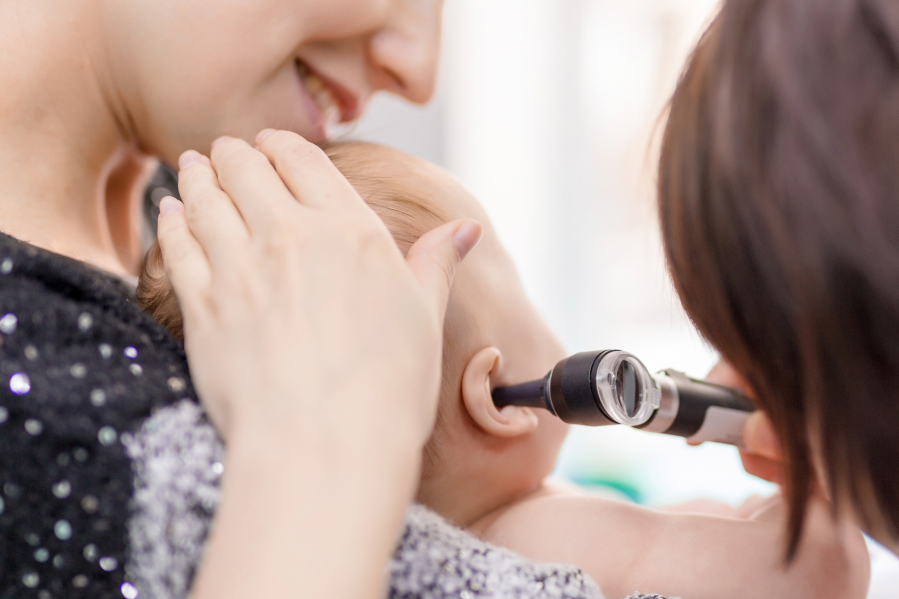A common cause of ear pain in children is an ear infection, or otitis media. Children are more likely than adults to get ear infections.
An ear infection is caused by a bacterium or virus in the middle ear. This infection often results from another illness — cold, flu or allergy — that causes congestion and swelling of the nasal passages, throat and eustachian tubes, which are narrow tubes that run from the middle ear to high in the back of the throat.
Symptoms
The onset of signs and symptoms of ear infection is usually rapid.
Signs and symptoms common in children include:
- Ear pain, especially when lying down.
- Tugging or pulling at an ear.
- Trouble sleeping.
- Crying more than usual.
- Fussiness.
- Trouble hearing or responding to sounds.
- Loss of balance.
- Fever of 100 or higher.
- Drainage of fluid from the ear.
- Headache.
- Loss of appetite.
Treatment
Because ear infections often clear up on their own, treatment may begin with managing pain and monitoring the problem. Sometimes, antibiotics are used to clear the infection.
Your child’s health care team may recommend:
- A wait-and-see approach. The American Academy of Pediatrics and the American Academy of Family Physicians recommend a wait-and-see approach as one option for: children 6 to 23 months with mild middle ear pain in one ear for less than 48 hours and a temperature less than 102.2; children 24 months and older with mild middle ear pain in one or both ears for less than 48 hours and a temperature less than 102.2.
- Managing pain. Your child’s health care professional will advise you on treatments to lessen pain from an ear infection. These may include over-the-counter pain medications or anesthetic drops.
- Antibiotic therapy. Some evidence suggests that treatment with antibiotics might be helpful for certain children with ear infections. On the other hand, usin
g antibiotics too often can cause bacteria to become resistant to the medicine. Talk with your child’s health care professional about the potential benefits and risks of using antibiotics.
- Ear tubes. If your child has repeated, long-term ear infections (chronic otitis media) or continuous fluid buildup in the ear after an infection cleared up (otitis media with effusion), your child’s health care professional may recommend ear tubes to drain fluid from the middle ear.



